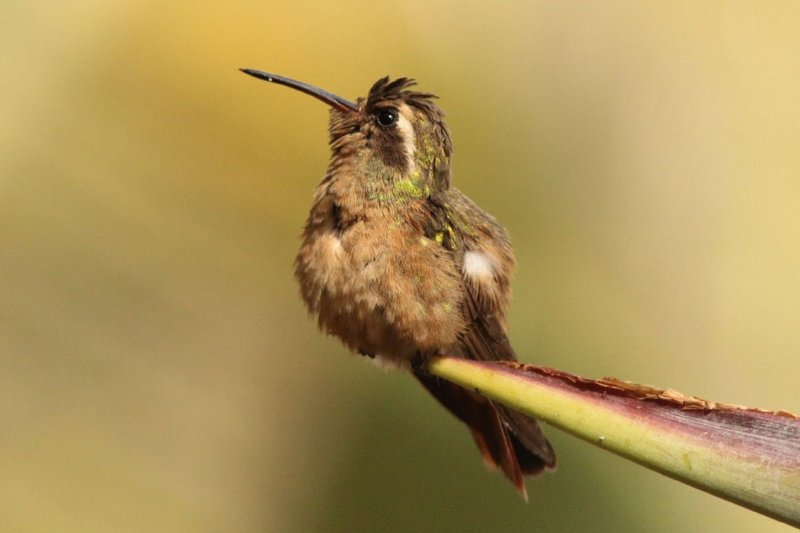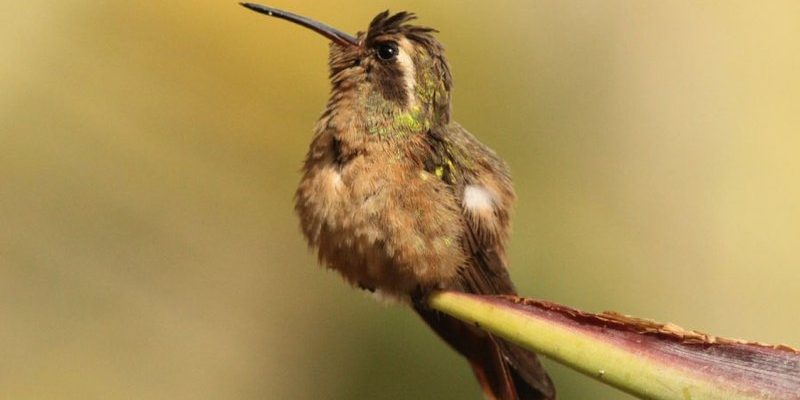
The Xantus’s Hummingbird is a vibrant little creature that can easily steal your heart. Imagine holding a tiny, iridescent jewel in your hand — that’s what spotting this hummingbird feels like. Found in specific regions of Mexico, this bird is a remarkable example of nature’s artistry, known for its dazzling colors and unique behaviors. If you’re curious about what makes the Xantus’s Hummingbird so special, you’re in for a treat!
These tiny birds, with their rapid wing beats and acrobatic flying skills, bring a splash of color and life to the arid landscapes they call home. They’re not just beautiful but also play vital roles in their ecosystem, mainly through pollination. So, let’s dive into the world of Xantus’s Hummingbird and explore everything you need to know about this marvelous bird.
Physical Characteristics
The physical appearance of the Xantus’s Hummingbird is nothing short of spectacular. Adults typically measure about 3.5 inches in length, with a wingspan that can reach up to 4.5 inches. Their plumage is predominantly green and blue, with a spectacular iridescent quality that makes them shimmer when they catch the light. Males are particularly striking with their vibrant throat patch, also known as a gorget, which can appear bright blue or green depending on the angle of light.
A fun fact: their small size doesn’t detract from their extraordinary agility. These birds can fly not only forward but also backward and even hover in place! Their wings move in a rapid figure-eight motion, allowing for those breathtaking aerial displays you might witness while they feed. This remarkable feat is primarily due to their powerful breast muscles, which account for about 30% of their body weight!
Habitat and Range
The Xantus’s Hummingbird primarily resides in the subtropical and tropical dry forests of southwestern Mexico. They thrive particularly in areas with abundant flowering plants, as these provide the nectar essential to their diet. You can often find them flitting about in the dry scrubland and thorny woodlands of Baja California, where they adapt well to the arid climate.
Interestingly, while their range is somewhat limited compared to other hummingbirds, it’s important to note that they can be quite agile in traversing their territories. They often establish feeding territories near flowers and feeders, defending their space fiercely from competitors. If you ever find yourself in their habitat during the right season, keep your eyes peeled — a Xantus’s Hummingbird might just put on a show for you!
Diet and Feeding Habits
When it comes to diet, the Xantus’s Hummingbird is a nectar aficionado. Their long, specialized bills are perfectly designed to extract nectar from tubular flowers, making them ideal pollinators. In addition to nectar, they also consume small insects and spiders, which provide essential proteins and nutrients. This blend of diet helps them maintain their energy, especially during migration periods when they need to fuel their long flights.
Their feeding technique is quite fascinating. A Xantus’s Hummingbird can often be seen hovering in front of a flower, rapidly darting its long tongue in and out to collect nectar. They have a high metabolic rate, meaning they need to feed frequently, sometimes visiting hundreds of flowers in a single day! To put it simply, these birds are constantly on the move, proving that good things really do come in small packages.
Behavior and Communication
The behavior of the Xantus’s Hummingbird is as captivating as its appearance. These birds are known for their territorial nature, especially during the breeding season. Males will often engage in elaborate aerial displays, showcasing their stunning plumage to attract females. They also produce a variety of sounds, from chirps to buzzes, which serve different purposes—from signaling distress to calling mates.
One of the most interesting aspects of their behavior is their migration patterns. Unlike some hummingbirds that migrate long distances, Xantus’s Hummingbirds tend to have a more localized movement, usually shifting elevation depending on the season. As temperatures rise or fall, they will move to cooler or warmer areas, adapting to the changing environment. This behavior highlights their resilience and adaptability, key traits for survival in the wild.
Conservation Status
Currently, the Xantus’s Hummingbird is classified as Least Concern by the IUCN Red List. However, like many species, they face challenges due to habitat loss and climate change. The destruction of their natural habitats, primarily due to agriculture and urban development, poses a significant risk. Conservation efforts are essential to ensure that this beautiful bird continues to thrive for generations to come.
Interestingly, local conservationists are working to preserve important habitats and educate communities about the value of these hummingbirds. By understanding the role of the Xantus’s Hummingbird in the ecosystem, we can help protect not just these charming creatures but also the flora they pollinate, which is vital for a healthy environment.
Interesting Facts
| Scientific Name: | Hylocharis xantusii |
| Size: | Approximately 3.5 inches |
| Wingspan: | Up to 4.5 inches |
| Diet: | Nectar, small insects, and spiders |
| Lifespan: | About 3 to 5 years in the wild |
| Breeding Season: | Spring to early summer |
How to Attract Xantus’s Hummingbirds
If you’re eager to attract Xantus’s Hummingbirds to your garden or backyard, there are a few strategies to consider. Start by planting native flowers that produce tubular blooms, such as salvia, trumpet vine, and bee balm. These plants are not only beautiful but also provide a natural nectar source. Additionally, consider placing hummingbird feeders filled with a sugar-water mixture (one part sugar to four parts water) around your yard. Just be sure to clean the feeders regularly!
In summary, the Xantus’s Hummingbird is a remarkable bird, not just for its beauty but also for its vital role in the ecosystem. From its unique feeding habits to its fascinating behaviors, there’s so much to appreciate about this little gem. By supporting conservation efforts and creating friendly environments, we can enjoy watching these hummingbirds thrive in the wild. Next time you spot one, take a moment to appreciate the miracle of nature that flutters right before your eyes.
FAQ
What is the primary threat to the Xantus’s Hummingbird?
The primary threat to the Xantus’s Hummingbird includes habitat loss due to agricultural expansion and urban development. As natural habitats are destroyed or altered, the birds find it increasingly difficult to access food sources and suitable nesting areas, putting their populations at risk.
How can I identify a male Xantus’s Hummingbird?
Males are typically more colorful than females, with a striking iridescent throat patch that can vary from blue to green. Their overall plumage tends to be brighter and more vivid than that of the females, making them easier to identify during breeding season.
Do Xantus’s Hummingbirds migrate?
While Xantus’s Hummingbirds do not migrate over long distances like many other hummingbird species, they do exhibit localized movements. They will shift their elevation or location based on seasonal temperature changes to find more suitable environments.
Are Xantus’s Hummingbirds aggressive?
Yes, they can be quite territorial, especially males during the breeding season. They often defend their feeding territories aggressively, engaging in aerial displays to establish dominance over other hummingbirds. This behavior is essential for attracting mates and ensuring access to food.
What plants should I grow to attract Xantus’s Hummingbird?
To attract Xantus’s Hummingbird, consider planting native flowering plants with tubular blooms. Flowers like salvia, bee balm, and trumpet vine are great options as they provide essential nectar and are visually appealing to hummingbirds.
How long do Xantus’s Hummingbirds live?
In the wild, Xantus’s Hummingbirds typically live between 3 to 5 years, though some may survive longer if they can avoid predators and have access to plentiful food sources.
How fast can a Xantus’s Hummingbird fly?
Xantus’s Hummingbirds can reach impressive speeds, often flying at speeds up to 30 miles per hour in short bursts. Their unique wing structure allows them to maneuver quickly, essential for evading predators and navigating their environments.
Are Xantus’s Hummingbirds good pollinators?
Yes, Xantus’s Hummingbirds are excellent pollinators! As they feed on nectar, they inadvertently transport pollen from flower to flower, aiding in plant reproduction. This vital role helps maintain the health and diversity of their ecosystems.
Where can I find Xantus’s Hummingbirds in the wild?
Xantus’s Hummingbirds are primarily found in the dry forests and scrublands of southwestern Mexico, particularly in Baja California. If you’re in this region, keep your eyes peeled during the blooming season, as that’s when you’re most likely to spot them!
What do Xantus’s Hummingbirds eat besides nectar?
In addition to nectar, Xantus’s Hummingbirds consume small insects and spiders. These provide essential proteins and nutrients that are crucial for their overall health, energy levels, and breeding success.
Can I keep Xantus’s Hummingbirds as pets?
Keeping Xantus’s Hummingbirds as pets is not advisable. They are wild birds that require specific diets, habitats, and social interactions that are difficult to replicate in a captive environment. Instead, supporting their natural habitats and observing them in the wild is the best way to appreciate these incredible creatures.

